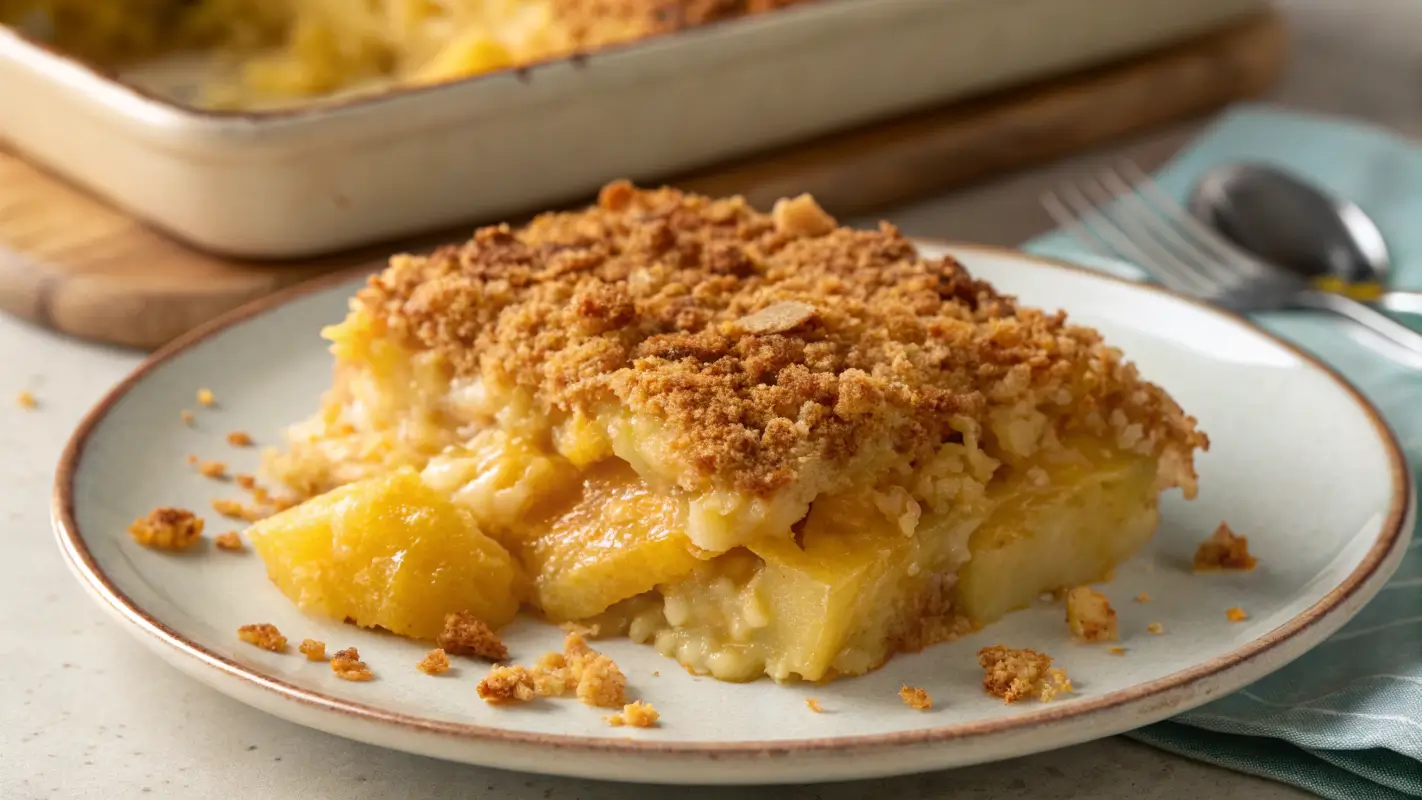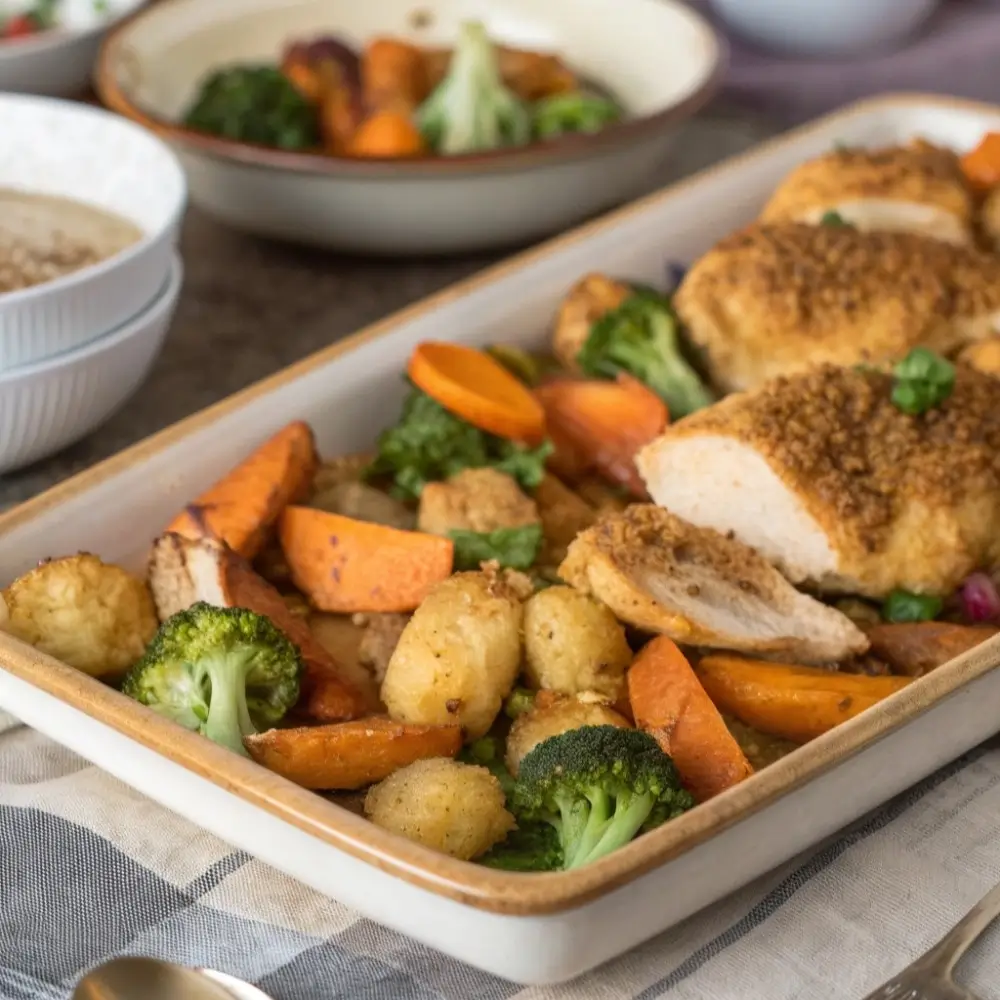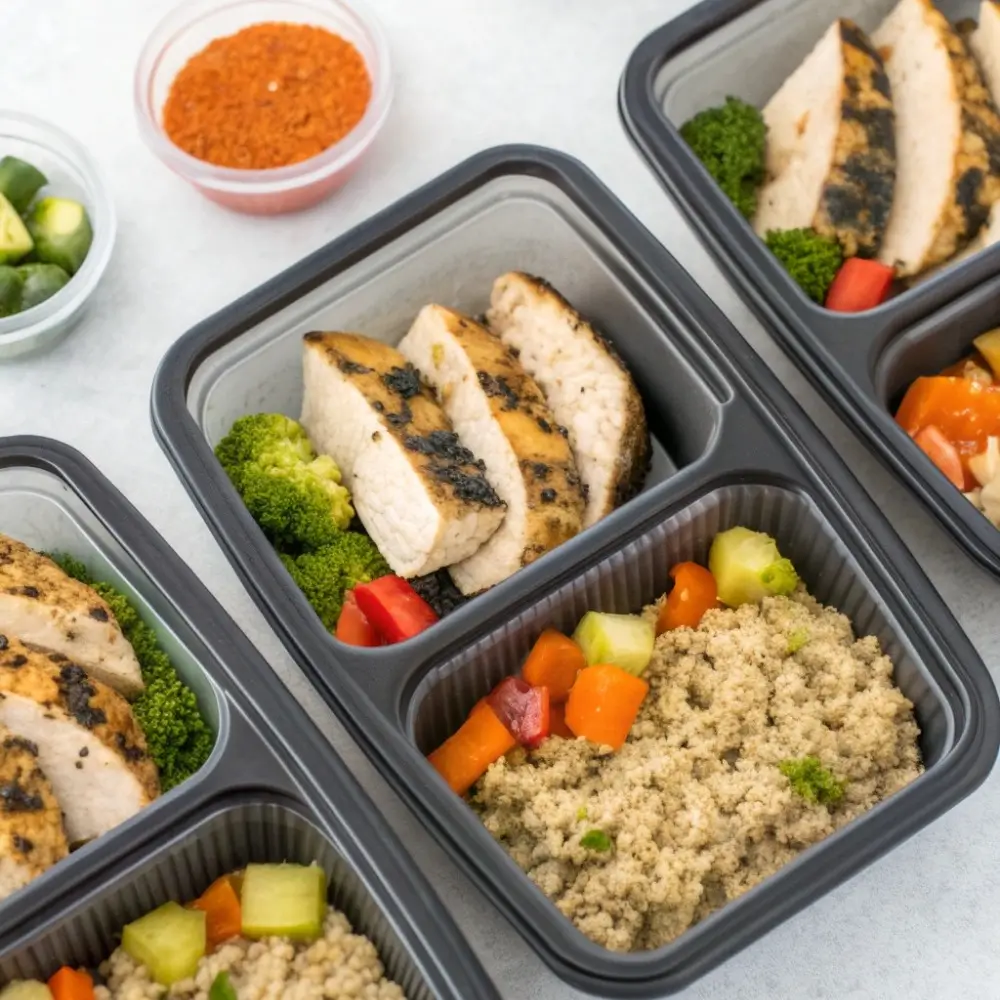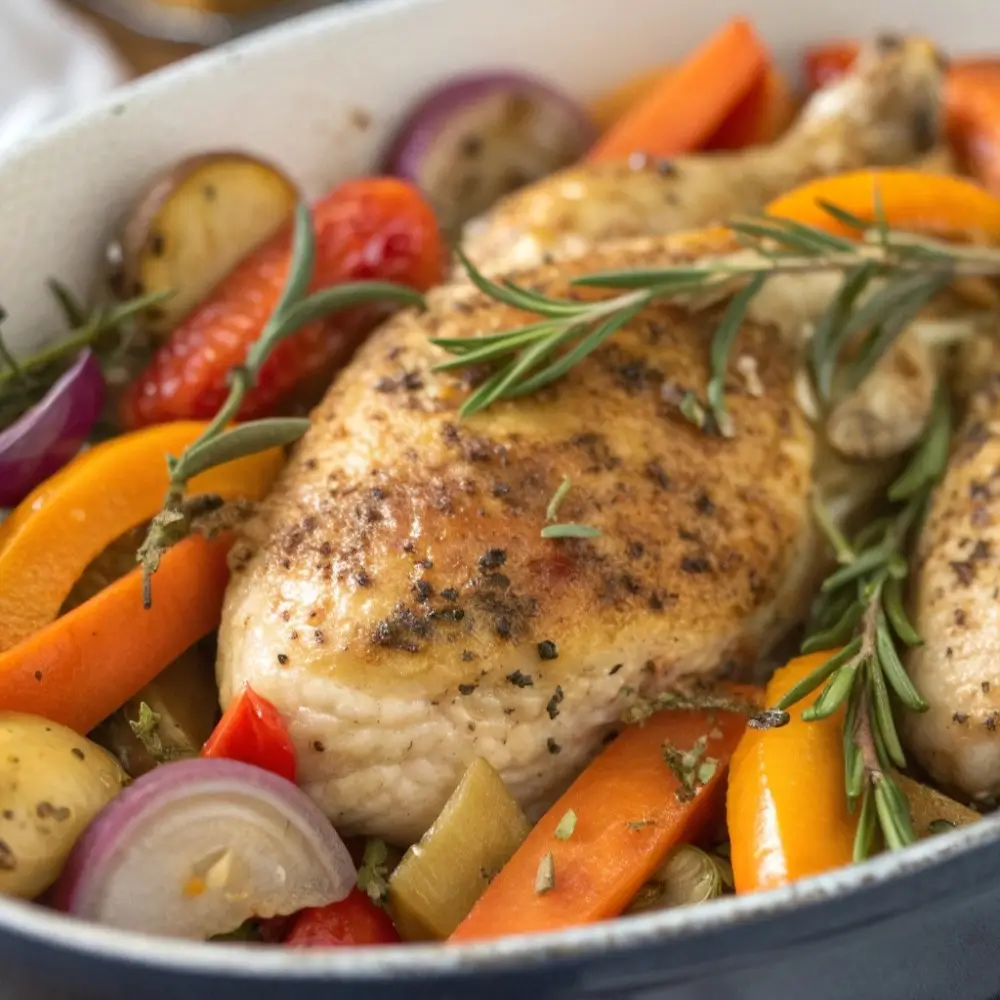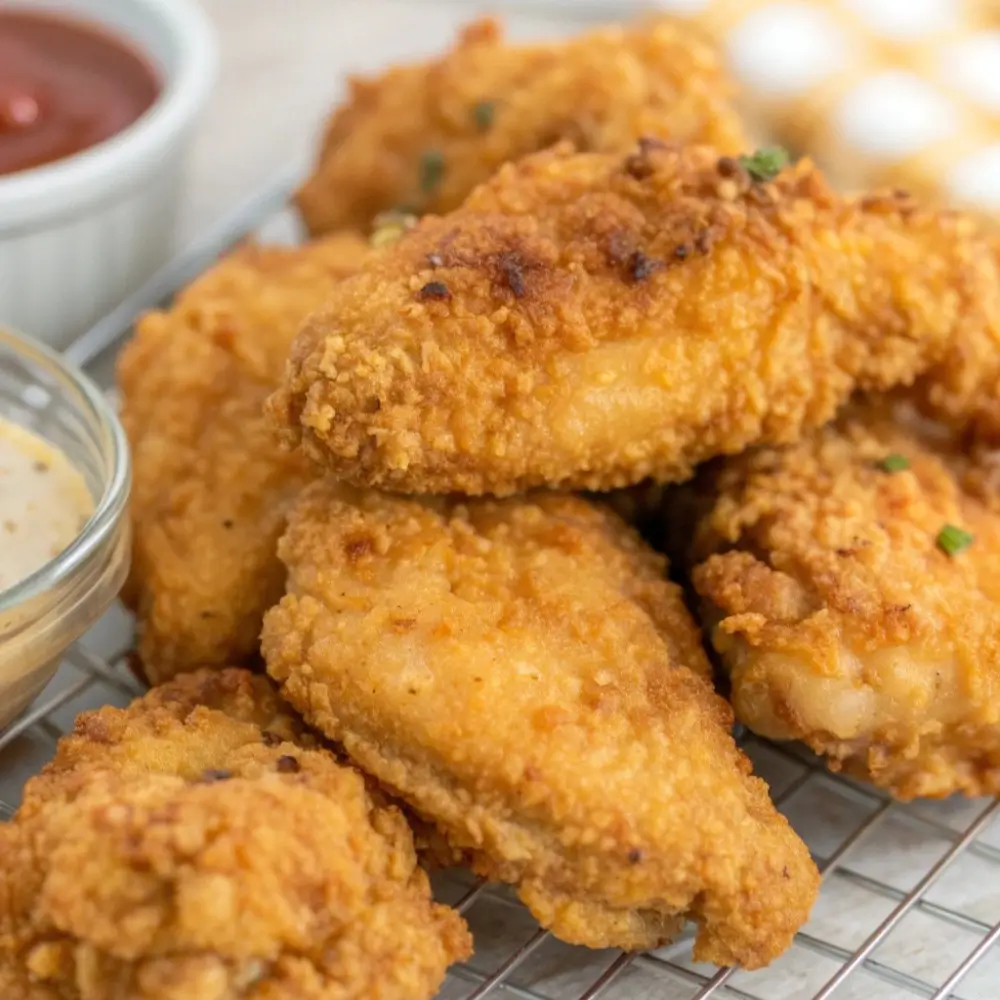Table of Contents
Introduction to Pineapple Casserole
When you think of casseroles, the first thing that likely comes to mind is a savory dish, something warm and hearty to pair with a family dinner. But, have you ever tried a pineapple casserole? It’s one of those unexpected, sweet-and-savory dishes that leave a lasting impression. A perfect combination of tangy pineapple, rich cheese, and crunchy crackers, this casserole is a delightful twist on your typical side dish. It may surprise you to know that pineapple casserole isn’t just for dessert—it makes an excellent side dish for everything from Thanksgiving dinner to casual weeknight meals.
The pineapple casserole recipe is a beloved staple, especially in Southern cuisine, where its sweet and savory flavor profile shines at family gatherings and holiday feasts. Imagine a golden crust on top, melted cheese mingling with the pineapple’s natural sweetness, and a satisfying crunch from the cracker topping. If you haven’t yet tried it, you’re in for a treat!
In this article, we’ll guide you through the delicious journey of making pineapple casserole. From understanding the basic ingredients to tips on adding creative twists, this recipe is simple to follow and will make you look like a kitchen pro. Ready to bring some sunshine to your dinner table? Let’s dive in and explore what makes this casserole so irresistible!
Key Ingredients for Pineapple Casserole
Before you dive into the deliciousness of pineapple casserole, it’s essential to understand what goes into creating this unique dish. The ingredients come together to create a delightful blend of sweet, savory, and crunchy flavors. Here’s what you’ll need:
The Essential Ingredients
-
Pineapple
The star of the show! You’ll want about 4 cups of pineapple for the recipe. Fresh pineapple is wonderful, but if you’re in a pinch, canned pineapple works perfectly fine as well. Just make sure to drain the canned version to avoid excess liquid that can affect the texture of your casserole. Pineapple brings that tangy sweetness that’s the heart of the dish. -
Cheddar Cheese
This is the savory side of the equation. A sharp cheddar cheese adds just the right amount of richness and boldness to balance out the pineapple’s sweetness. You can experiment with a mild or sharp variety, but remember that sharp cheddar gives the best flavor contrast. -
Butter
A couple of tablespoons of butter help to enrich the flavor, giving it a smooth, creamy texture. It also helps the casserole develop a golden, crispy top as it bakes. Butter adds the necessary fat to make this dish extra comforting. -
Sugar
A bit of sugar enhances the sweetness of the pineapple. The amount of sugar will depend on your preference and whether you’re using fresh or canned pineapple. If you want a lighter dish, you can use a sugar substitute or reduce the amount of sugar. -
Eggs
Eggs help bind the ingredients together, giving the casserole a custard-like texture. They also contribute to the overall richness, making the dish feel more indulgent. -
Crushed Crackers
The cracker topping adds a satisfying crunch to the casserole. You can use regular saltine crackers or even Ritz crackers for a buttery, slightly sweet crunch. You’ll crush them to sprinkle over the top, creating a golden, crispy layer that contrasts perfectly with the creamy filling.
Optional Add-Ins and Substitutions
-
Coconut
For a tropical twist, you can add shredded coconut to your pineapple casserole. It complements the pineapple and adds extra texture and flavor. -
Vanilla Extract
If you’re looking to add a hint of depth to the flavor, a teaspoon of vanilla extract goes a long way. -
Low-Fat or Non-Dairy Alternatives
You can substitute the butter and cheese with low-fat or non-dairy alternatives to make the recipe more diet-friendly without compromising too much on flavor.
Ingredient Substitutions for Special Diets
- Gluten-Free: Use gluten-free crackers to make this dish suitable for those with gluten sensitivities. You can also find gluten-free breadcrumbs to substitute for crackers.
- Dairy-Free: Opt for dairy-free cheese and butter substitutes to make this casserole dairy-free.
Step-by-Step Pineapple Casserole Recipe
Now that you’ve gathered all the essential ingredients, it’s time to bring everything together and make your delicious pineapple casserole. This recipe is incredibly simple, making it perfect for beginners and seasoned cooks alike. Follow these steps, and you’ll have a golden, sweet, and savory dish ready in no time!
Step 1 – Preheat Your Oven
Before you start mixing your ingredients, preheat your oven to 350°F (175°C). This ensures your casserole bakes evenly and gets that golden, crispy top everyone loves.
Step 2 – Prepare Your Casserole Dish
Grease a 9×13-inch baking dish with butter or cooking spray to prevent the casserole from sticking. If you’re feeling extra indulgent, you can rub a bit of butter along the bottom and sides for extra flavor and richness. A glass or ceramic dish works best for even heat distribution, but any baking dish will do!
Step 3 – Mix the Pineapple, Sugar, and Eggs
In a large bowl, start by draining your pineapple if you’re using canned. You want to remove any excess liquid, as it can make the casserole soggy. Add the pineapple to the bowl, then crack in 2 large eggs and whisk them together with the pineapple. The eggs will help create a creamy custard-like texture in the casserole once it’s baked.
Now, add 1 cup of sugar (or less, if you prefer a less sweet dish) and stir everything together. If you want to add a touch of vanilla extract for extra flavor, now is the time to mix in 1 teaspoon of vanilla. The sugar will dissolve into the pineapple mixture, creating a sweet base for your casserole.
Step 4 – Stir in the Cheddar Cheese and Butter
Next, stir in 1 cup of shredded sharp cheddar cheese. You can also use a mild cheddar or a cheese blend if you prefer. The cheese adds a savory richness that balances out the sweetness of the pineapple. Then, melt 4 tablespoons of butter and mix it into the pineapple mixture. The butter will help everything come together and give your casserole a beautiful golden color once it’s baked.
Step 5 – Add the Crushed Crackers
In a separate bowl, crush 1 sleeve of crackers (about 25 crackers). You can use traditional saltine crackers or buttery Ritz crackers for an extra burst of flavor. The crackers create the signature topping that adds a delicious crunch.
Sprinkle the crushed crackers over the top of the pineapple mixture, ensuring it’s evenly distributed. You can press the crackers gently into the mixture to help them stick during baking. This step is crucial for that irresistible crispy top!
Step 6 – Bake the Casserole
Now it’s time to bake your pineapple casserole! Place the dish in the preheated oven and bake for 45 to 50 minutes. You’ll know it’s done when the top is golden and bubbly, and the edges are slightly crispy. The cheese should be melted and the casserole should be firm but slightly jiggly in the center. If you want it extra crispy, you can bake for an additional 5 minutes, but be sure to watch it closely to avoid burning the top.
Step 7 – Let It Cool Slightly
Once the casserole is done, remove it from the oven and let it cool for about 5 to 10 minutes. This allows the dish to set a bit, making it easier to serve. The flavors will continue to develop as it cools, and you’ll be left with a perfectly balanced sweet-and-savory casserole.
Tips for Perfect Pineapple Casserole
- Use room temperature eggs: This helps them blend into the mixture more easily.
- Don’t skip draining the pineapple: Excess liquid can make your casserole soggy, so be sure to press or drain the pineapple well.
- Customize the cheese: Feel free to experiment with other cheeses like mozzarella or Gruyère for a different flavor twist.
Variations of Pineapple Casserole
While the classic pineapple casserole recipe is a beloved dish, it’s always fun to add your own twist! Whether you’re looking to create a more tropical version or add a savory kick, there are plenty of variations to explore. Here are some ideas for customizing your pineapple casserole to suit your taste preferences or to impress your guests.
Tropical Twist
If you want to take your pineapple casserole into more of a tropical direction, consider adding shredded coconut and mango. You can mix 1/2 cup of shredded coconut into the pineapple mixture before baking, giving it a wonderful texture and a hint of coconut flavor. You can also swap out some of the pineapple for fresh mango chunks for an extra fruity pop. Mango pairs beautifully with pineapple and enhances the tropical vibe of the dish.
Spicy Pineapple Casserole
For those who like a little heat, adding jalapeños or chili flakes to the casserole can create a delightful sweet-and-spicy contrast. Slice up a couple of jalapeño peppers, remove the seeds, and finely chop them. Stir the chopped jalapeños into the pineapple mixture for a mild heat, or add 1/2 teaspoon of chili flakes to the topping for an added kick. This will give your casserole an unexpected twist, perfect for spice lovers.
Pineapple and Ham Casserole
While many traditional versions of pineapple casserole are sweet, some recipes take a more savory route by incorporating ham. For a pineapple and ham casserole, add 1-2 cups of diced cooked ham into the pineapple mixture before baking. The savory, salty flavor of the ham contrasts nicely with the sweetness of the pineapple, creating a dish that’s both hearty and flavorful. This variation works great for dinner parties and can serve as a main course if you’re looking to serve a more substantial meal.
Vegan Pineapple Casserole
For those following a vegan diet or looking for a dairy-free alternative, you can easily adapt the pineapple casserole recipe. Use dairy-free cheese and vegan butter as substitutes for the traditional ingredients. There are many high-quality plant-based cheeses on the market that melt beautifully and create that same creamy texture you love in a pineapple casserole. Additionally, flaxseed eggs can replace regular eggs to bind the ingredients together. This vegan version is just as delicious as the original!
Low-Sugar Pineapple Casserole
If you’re watching your sugar intake, you can easily make a lower-sugar version of this dish. Replace the 1 cup of sugar with a natural sweetener like Stevia or Erythritol. These alternatives won’t sacrifice flavor but will lower the calorie and sugar content. You can also use fresh pineapple instead of canned pineapple with syrup, which tends to be sweeter.
Common Mistakes to Avoid
While making a delicious pineapple casserole seems simple, there are a few common mistakes that can ruin the dish. To ensure your casserole turns out perfect every time, keep these tips in mind and avoid the following pitfalls.
1. Not Draining the Pineapple
One of the biggest mistakes people make when making pineapple casserole is not properly draining the canned pineapple. The excess juice can make the casserole soggy and affect the texture. Always use a strainer to remove as much liquid as possible before adding the pineapple to your recipe. If you’re using fresh pineapple, be sure to chop it into small, even pieces and drain any extra moisture.
2. Using the Wrong Type of Cheese
Cheddar cheese is a staple in pineapple casserole because of its sharp flavor, but it’s important to choose the right type. Opt for shredded sharp cheddar or mild cheddar, but avoid pre-shredded cheese from the bag, as it often contains anti-caking agents that don’t melt as smoothly. You want the cheese to melt seamlessly into the dish, adding creaminess and flavor.
3. Overbaking the Casserole
Overbaking can lead to a dry or burnt topping, which can take away from the creamy, soft texture of the casserole. Always check your casserole a few minutes before the recommended baking time ends. The casserole is done when the top is golden brown, and the edges are crispy, but it should still have a slightly jiggly center. If you overbake, you might lose that perfect balance between the crispy topping and the soft, creamy interior.
4. Not Using Enough Topping
The topping is what makes pineapple casserole truly irresistible, giving it that delightful crunch. Some people skimp on the cracker topping, but this can result in a casserole that lacks that golden, crispy finish. Be generous with your crushed crackers! You want an even layer covering the entire top of the casserole to give it that signature crunch.
5. Skipping the Cooling Time
After your casserole comes out of the oven, it’s tempting to dig right in, but skipping the cooling time can lead to a runny or unset casserole. Let it cool for 5 to 10 minutes to allow the casserole to set and make serving easier. This short wait will ensure the casserole firms up and holds its shape when you scoop it.
Frequently Asked Questions (FAQs)
When it comes to making pineapple casserole, there are often a few questions that arise as people prepare this sweet and savory dish. Below are some of the most common questions and helpful answers to guide you through the process.
1. Can I make pineapple casserole ahead of time?
Yes, you can absolutely make pineapple casserole ahead of time. To do this, prepare the casserole according to the recipe, but instead of baking it, cover it tightly with plastic wrap or foil and refrigerate it for up to 24 hours. When you’re ready to bake, simply pop it into the preheated oven and bake as directed. You may need to add a few extra minutes to the baking time since it’s cold from the fridge.
2. Can I use fresh pineapple instead of canned?
Yes, you can use fresh pineapple in place of canned pineapple. Fresh pineapple will add a slightly different texture and flavor, but it will work just as well. Be sure to cut it into small, uniform pieces and drain any excess liquid before adding it to your casserole.
3. Can I freeze pineapple casserole?
You can freeze pineapple casserole, but keep in mind that the texture may change slightly once thawed. To freeze, prepare the casserole as directed but do not bake it. Instead, cover it tightly and store it in the freezer for up to 3 months. When you’re ready to enjoy it, thaw the casserole overnight in the refrigerator and bake as usual. The topping may not be as crisp as when freshly baked, but it will still taste delicious!
4. Can I substitute the cheese in this recipe?
Yes, if you’re not a fan of cheddar or want to try a different flavor, you can substitute the cheddar cheese with other varieties like mozzarella, Colby Jack, or even cream cheese for a creamier texture. Keep in mind that this will alter the flavor of your casserole, but it will still be delicious!
5. Is pineapple casserole a dessert or a side dish?
Pineapple casserole is generally considered a side dish, but it’s sweet enough to be served as a dessert too! It’s often enjoyed at family gatherings, holiday meals, or barbecues. Its versatility allows it to be served alongside savory dishes or as a sweet treat, making it a crowd-pleaser at any meal.
Nutritional Information
When making pineapple casserole, it’s important to consider the nutritional content to ensure it fits your dietary needs. While the casserole is a delicious treat, it’s also a rich and indulgent dish, so understanding the nutritional breakdown can help you enjoy it in moderation.
Nutritional Breakdown (Per Serving)
- Calories: Approximately 200-250 calories per serving (depending on the portion size and ingredients used)
- Carbohydrates: Around 40-45 grams of carbs, mostly from pineapple and the sweet topping
- Fat: Typically 10-12 grams of fat, which comes from the cheese, butter, and crushed crackers
- Protein: Roughly 4-6 grams of protein, primarily from the cheese
- Sugar: About 20-25 grams of sugar, with a significant portion coming from the pineapple and added sweeteners
- Fiber: Around 1-2 grams of fiber from the pineapple and crackers
Modifications for Healthier Versions
If you’re looking to make your pineapple casserole a bit healthier, consider these swaps:
- Use a lower-fat cheese: Opt for reduced-fat cheddar or a plant-based cheese alternative.
- Replace sugar with a natural sweetener: Stevia or erythritol can reduce the sugar content.
- Choose whole-grain crackers: Instead of regular crackers, use whole-grain versions for added fiber.
These modifications can help make the dish a little lighter while still keeping the same comforting flavor.
For more helpful cooking tips and inspiration, visit The Spruce Eats’ casserole recipes.
Conclusion
In conclusion, pineapple casserole is a versatile and crowd-pleasing dish that can be customized to suit any taste. Whether you’re sticking with the classic recipe or adding your own creative twist, it’s perfect for holidays, family gatherings, or any meal that needs a touch of sweetness. With a few simple ingredients and steps, you’ll be able to create a delicious dish that everyone will love. Enjoy your cooking adventure!
